
Magnetically Controlled Pill
November 13, 2011
 A new magnetic pill system developed by Brown University researchers could solve the problem by safely holding a pill in place in the intestine wherever it needs to be. The two main components of the system are conventional-looking gelatin capsules that contain a tiny magnet, and an external magnet that can precisely sense the force between it and the pill and vary that force, as needed, to hold the pill in place. The external magnet can sense the pill's position, but because the pill is opaque to x-rays, the researchers were also able to see the pill in the rat's bodies during their studies.
A new magnetic pill system developed by Brown University researchers could solve the problem by safely holding a pill in place in the intestine wherever it needs to be. The two main components of the system are conventional-looking gelatin capsules that contain a tiny magnet, and an external magnet that can precisely sense the force between it and the pill and vary that force, as needed, to hold the pill in place. The external magnet can sense the pill's position, but because the pill is opaque to x-rays, the researchers were also able to see the pill in the rat's bodies during their studies.
For more information, check out the PNAS article by Bryan Laulicht, Edith Mathiowitz et al.
Atomic Structure of Nanoparticles Measured
November 05, 2011
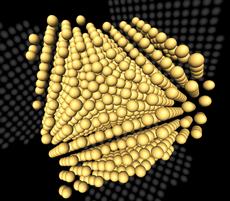 For the first time, scientists have managed to measure the atomic structure of individual nanoparticles. The experimental data could help better understand the properties of nanoparticles in future.
For the first time, scientists have managed to measure the atomic structure of individual nanoparticles. The experimental data could help better understand the properties of nanoparticles in future.
In chemical terms, nanoparticles have different properties from their “big brothers and sisters”: they have a large surface area in relation to their tiny mass and at the same time a small number of atoms. This can produce quantum effects that lead to altered material properties. Ceramics made of nanomaterials can suddenly become bendy, for instance, or a gold nugget is gold-coloured while a nanosliver of it is reddish. Up to now, very little research has been carried out on the effects of these altered properties on living organisms. Only recently, a study caused quite a stir by suggesting that nanoparticles like titanium oxide in toothpaste or sun cream have a similar effect on the human lung as asbestos. More here.
Iron Oxide Nanocubes Enhance MRI
October 17, 2011
![]() Uniformly sized ferrimagnetic magnetite nanocubes coated with a polyethylene glycol-phospholipid matrix could be used as contrast agents in magnetic resonance imaging. The researchers that the nanocubes could outperform commercial and experimental contract agents for imaging and tracking cells in vitro and in vivo. In the image to the left, the presence of the iron oxide nanoparticles caused pancreatic islets transplanted into a pig’s liver to appear as blue spots in a color-enhanced in vivo MRI. Please click HERE for more information.
Uniformly sized ferrimagnetic magnetite nanocubes coated with a polyethylene glycol-phospholipid matrix could be used as contrast agents in magnetic resonance imaging. The researchers that the nanocubes could outperform commercial and experimental contract agents for imaging and tracking cells in vitro and in vivo. In the image to the left, the presence of the iron oxide nanoparticles caused pancreatic islets transplanted into a pig’s liver to appear as blue spots in a color-enhanced in vivo MRI. Please click HERE for more information.
Electromagnetic Liquid Pistons
October 17, 2011
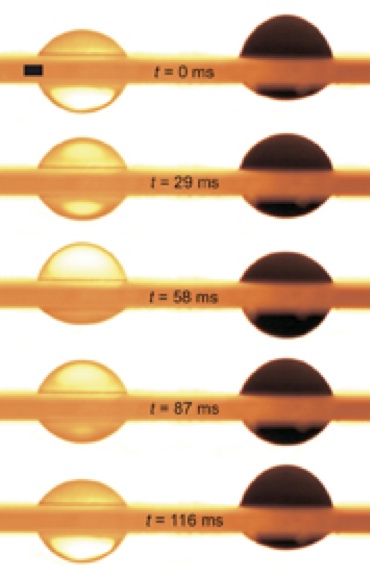 Researchers at Rensselaer Polytechnic Institute have developed liquid pistons of oscillating droplets of nanoparticle infused ferrofluids that can be used to pump small volumes of liquid when pulsated. This technology can also function as liquid lenses that vibrate at high speeds and move in and out of focus as they change shape. The pistons could have applications in new generation cameras, medical imaging equipment, novel drug delivery systems and even implantable eye lenses! Please click HERE for more information.
Researchers at Rensselaer Polytechnic Institute have developed liquid pistons of oscillating droplets of nanoparticle infused ferrofluids that can be used to pump small volumes of liquid when pulsated. This technology can also function as liquid lenses that vibrate at high speeds and move in and out of focus as they change shape. The pistons could have applications in new generation cameras, medical imaging equipment, novel drug delivery systems and even implantable eye lenses! Please click HERE for more information.
Charité Establishes NanoTherm® Therapy for the Treatment of Recurrent Brain Tumors
October 08, 2011Universitätsmedizin Berlin has established a new treatment at the Clinic for Radiooncology, Campus Virchow, which offers selected patients a nanomedicine approach for the treatment of recurrent brain tumors. Dr. Andreas Jordan at Charité developed the magnetic nanoparticle-based cancer therapy and is now marketing it through MagForce Nanotechnologies AG, a Charité spin off company.
The principle of the therapy is the use of nanoparticles containing iron oxide, which are injected into brain tumor in a procedure similar to a biopsy. The treatment is carried out in a magnetic field applicator (NanoActivator™), a machine that produces an alternating magnetic field and is very safe for humans. Through this high frequency magnetic field, the nanoparticles begin to oscillate and heat is produced from directly within the tumor tissue. Depending on the temperature reached and length of treatment, the tumor cells are either directly destroyed or sensitized for the accompanying chemotherapy or radiation. This novel therapy has the potential to improve the survival for patients with recurrent glioblastoma, an especially malignant type of brain tumor.
The clinical trial that lead to the therapy’s European approval has been written up in a recent paper. The median overall survival from diagnosis of the first tumor recurrence among the 59 patients with recurrent glioblastoma was 13.4 months (95% CI: 10.6–16.2 months). This is significantly better than historical comparisons, actually by about 8 months! Please check out the details here.
Researchers Pinpoint the Cause of MRI Vertigo
October 02, 2011A team of researchers says it has discovered why so many people undergoing magnetic resonance imaging (MRI), especially in newer high-strength machines, get vertigo, or the dizzy sensation of free-falling, while inside or when coming out of the tunnel-like machine.
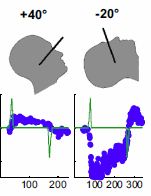
Check it out here.
Prediction of a New Equilibrium State for the Aggregation of Superparamagnetic Colloids Under High Fields
September 19, 2011It is known that dispersions of superparamagnetic nanoparticles tend to arrange in chain-like structures under high external and uniaxial magnetic fields. According to previous experiments and computer simulations, these chain-like structures are expected to grow with time following a power law behavior.
New Langevin Dynamics simulations and thermodynamical arguments in a recent paper by Adnreu et al has show that, in some conditions, these dispersions of aggregates attain an equilibrium state after a transient period of chain formation. This novel state can be explained in the basis of a balance between energetic and entropic effects on the chain formation process. The properties of this equilibrium state can be described by the magnetic content of the superparamagnetic particles, their size and the initial concentration of particles. At the time of publication of these theoretical results, there was no clear experimental evidence for such an equilibrium state under high magnetic fields. However, a few months later, Barrett et al published new results on magnetic aggregation employing Small Angle Neutron Scattering (SANS), which supports the existence of this equilibrium state.
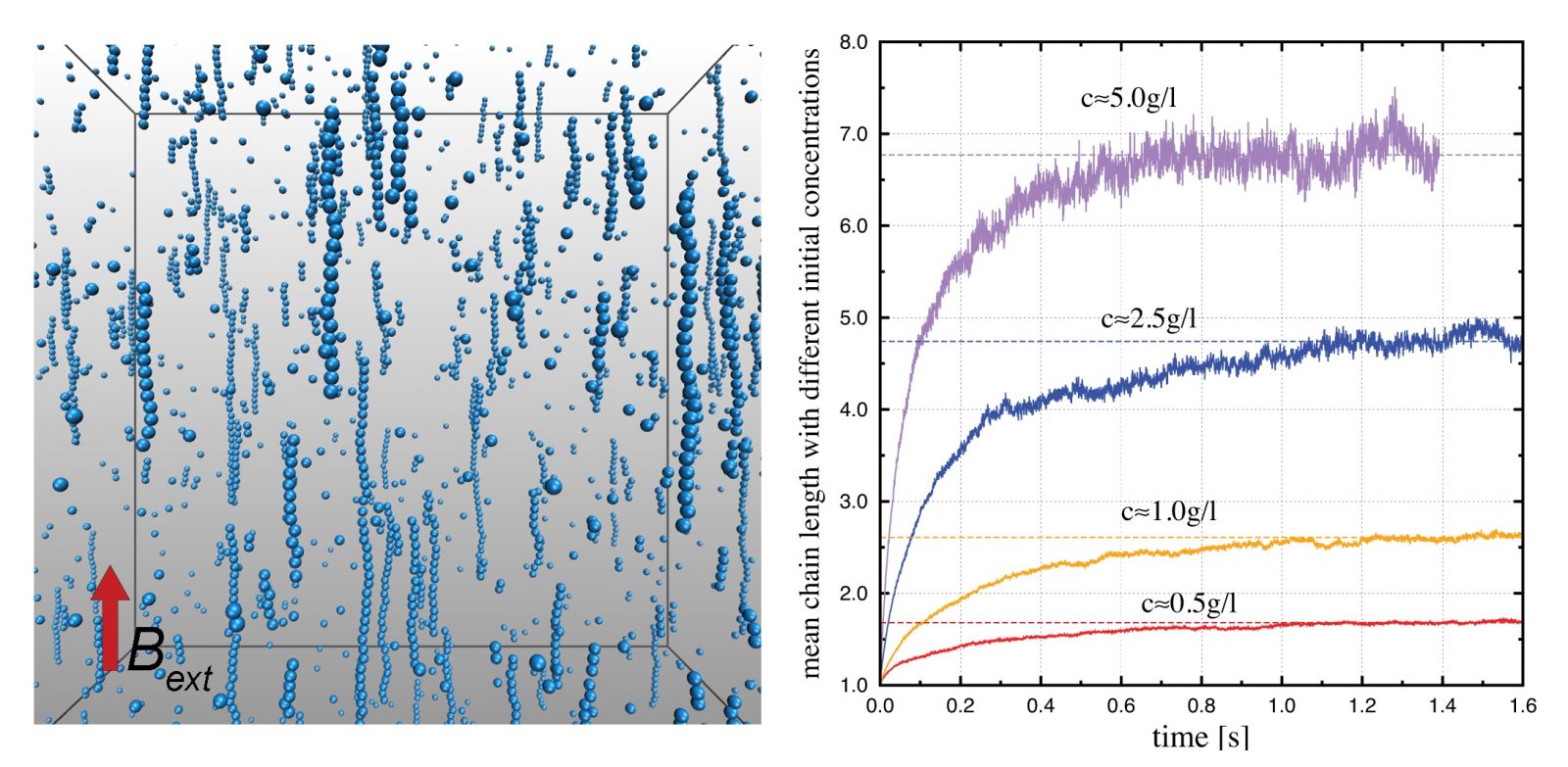
Researchers Invent New Drug Delivery Device to Treat Diabetes-Related Vision Loss
September 16, 2011Diabetic retinopathy is a complication of diabetes mellitus that can eventually lead to blindness.
At the University of British Columbia, researchers in the Faculty of Pharmacuetical Science and the Department of Mechanical Engineering have developed a novel device that will make drug treatment for diabetic retinopathy safer and more effective. The device, no larger than the head of a pin, consists of a sealed reservoir made of flexible polydimethylsiloxane that is implanted behind the eye. Part of the reservoir’s flexible membrane is magnetic; an electric field applied to the device causes the magnetic membrane to deform and release a controlled amount of drug out of a small hole. An advantage of this device is that it requires no batteries or electricity. Early lab tests using the drug doxetaxel have shown that the device can consistently deliver a suitable dosage without breaking or leaking after 35 days and maintain pharmacological activity of the docetaxel for over 2 months.
Click HERE to read the full paper.
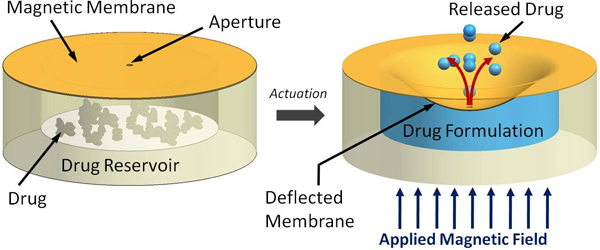
For more information, check out our Archives.
September 2017
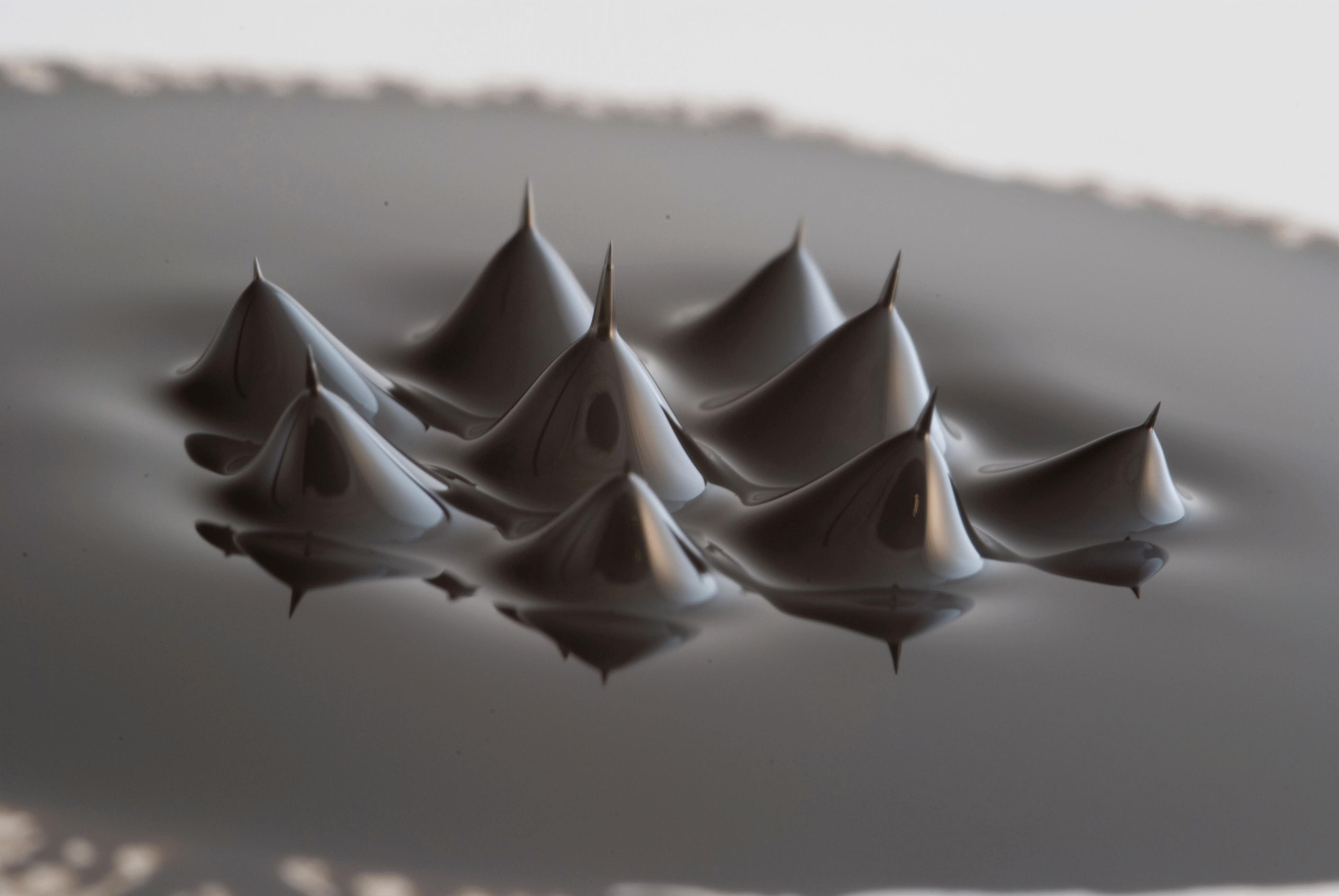
Search this site with the power of
